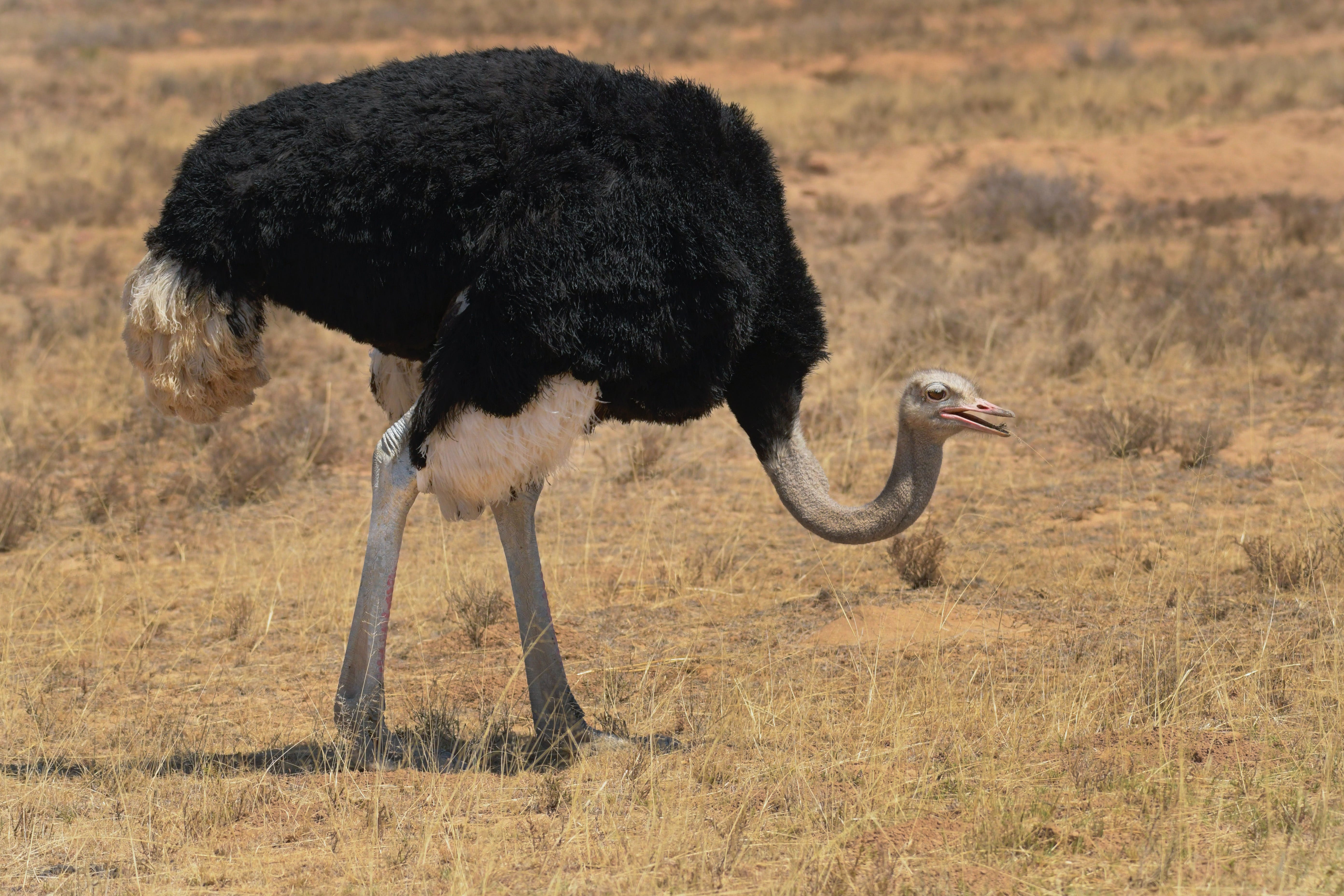10 Fun Facts about Ostriches |

|
|
Photo by: Frans Van Heerden |
|
Ostriches are fascinating creatures that captivate with their unique characteristics and behaviors. From their impressive size to their quirky habits, ostriches are truly remarkable animals. Let's explore 10 fun and intriguing facts about ostriches that will deepen your appreciation for these magnificent birds. Also, we talk about animals, countries, fun facts, and more on our podcast! So give it a listen!
1. Ostriches Are the Largest BirdsOstriches hold the title of the largest birds on Earth. They can reach towering heights of up to 9 feet (2.7 meters) and weigh as much as 320 pounds (145 kilograms), making them true giants of the avian world. 2. Ostriches Have Powerful LegsOstriches are known for their incredibly strong legs, which they use for both running and defending themselves. Their legs can deliver powerful kicks capable of fending off predators such as lions and hyenas. 3. Ostriches Are Fast RunnersDespite their large size, ostriches are incredibly fast runners, capable of reaching speeds of up to 45 miles per hour (72 kilometers per hour). Their impressive speed allows them to outrun many predators in the wild. 4. Ostriches Have Tiny BrainsDespite their physical prowess, ostriches have relatively small brains compared to their body size. However, they possess keen instincts and are highly adaptable to their environment. 5. Ostriches Cannot FlyUnlike most birds, ostriches are flightless. Instead of flying, they rely on their powerful legs for locomotion. However, ostriches are skilled runners and can cover long distances with ease. 6. Ostriches Have Unique EyesOstriches have the largest eyes of any land animal, measuring around 2 inches (5 centimeters) in diameter. Their eyes are positioned on either side of their head, providing them with excellent panoramic vision. 7. Ostriches Are OmnivoresWhile ostriches are primarily herbivores, feeding on plants, seeds, and grasses, they are also known to consume insects, lizards, and other small animals. Their omnivorous diet allows them to adapt to a wide range of habitats. 8. Ostriches Swallow StonesTo aid in digestion, ostriches swallow stones and pebbles, which help grind up food in their muscular gizzards. This process, known as gastroliths, helps ostriches break down tough plant material. 9. Ostriches Are Social BirdsOstriches are social animals that live in groups known as flocks. These flocks typically consist of a dominant male, several females, and their offspring. Living in groups provides ostriches with safety and enhances their chances of survival. 10. Ostriches Lay the Largest EggsOstriches produce the largest eggs of any living bird species. Their eggs are about 6 inches (15 centimeters) in length and can weigh up to 3 pounds (1.4 kilograms). Despite their size, ostrich eggs have relatively thin shells.
A Few More Interesting Facts About the OstrichThere are so many great and interesting things about the ostrich. Here are a few more facts!
More Animal Fun FactsWe have all sorts of great fun facts about animals on our site. Here are a few more worth checking out! Fun Facts About Ostriches FAQsCan ostriches swim?While ostriches are adept runners, they are not built for swimming. Their large bodies and heavy plumage make it difficult for them to stay afloat in water, and they typically avoid bodies of water whenever possible. How long do ostriches live?In the wild, ostriches have an average lifespan of 30 to 40 years. In captivity, they can live even longer, with some individuals reaching 50 years of age or more. Are ostriches aggressive?While ostriches can be defensive and territorial, they are not inherently aggressive animals. They will typically only become aggressive if they feel threatened or cornered, resorting to kicking or striking with their powerful legs as a form of defense. Can ostriches bury their heads in the sand?Contrary to popular belief, ostriches do not bury their heads in the sand to avoid danger. When they sense danger, ostriches may lie low and press their necks against the ground to blend in with their surroundings, giving the illusion that their heads are buried. How do ostriches protect their eggs?Male and female ostriches take turns incubating their eggs, with the male typically sitting on the eggs during the day and the female taking over at night. Ostriches also use their keen eyesight and sharp hearing to detect potential threats and defend their nesting sites. Are ostriches endangered?Ostriches are not considered endangered, and their populations are relatively stable in the wild. However, habitat loss and hunting pose potential threats to ostrich populations in certain regions. Can ostriches be domesticated?Yes, ostriches can be domesticated and raised on ostrich farms for their meat, eggs, and feathers. Domesticated ostriches are typically bred for commercial purposes and are managed by humans for agricultural production. |